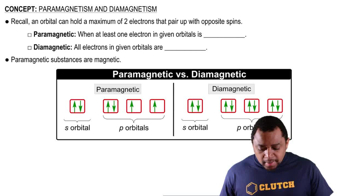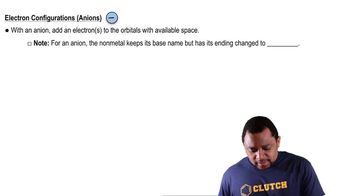Here are the essential concepts you must grasp in order to answer the question correctly.
Molecular Orbital Theory
Molecular Orbital (MO) Theory describes how atomic orbitals combine to form molecular orbitals, which can be occupied by electrons. In this theory, electrons are delocalized over the entire molecule, and the energy levels of these orbitals determine the stability and magnetic properties of the molecule. Understanding the arrangement of electrons in these orbitals is crucial for predicting whether a species is diamagnetic or paramagnetic.
Recommended video:
Diamagnetism and Paramagnetism
Diamagnetism is a property of materials that have all their electrons paired, resulting in no net magnetic moment and a weak repulsion from magnetic fields. In contrast, paramagnetism occurs in materials with unpaired electrons, leading to a net magnetic moment and attraction to magnetic fields. Identifying the electron configuration of a molecule or ion helps determine its magnetic properties based on the presence of unpaired electrons.
Recommended video:
Paramagnetism and Diamagnetism
Electron Configuration of Ions
The electron configuration of an ion is derived from the neutral atom's configuration, adjusted for the gain or loss of electrons. For F2-, two additional electrons are added to the molecular orbitals compared to the neutral F2 molecule. Analyzing the resulting electron configuration allows us to assess the number of unpaired electrons, which is essential for determining whether the ion is diamagnetic or paramagnetic.
Recommended video:
Anion Electron Configuration
 McMurry 8th Edition
McMurry 8th Edition Ch.8 - Covalent Compounds: Bonding Theories and Molecular Structure
Ch.8 - Covalent Compounds: Bonding Theories and Molecular Structure Problem 102
Problem 102 Verified step by step guidance
Verified step by step guidance


